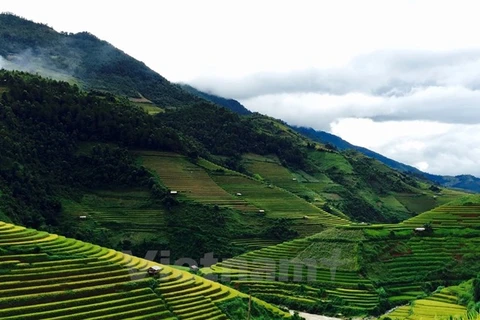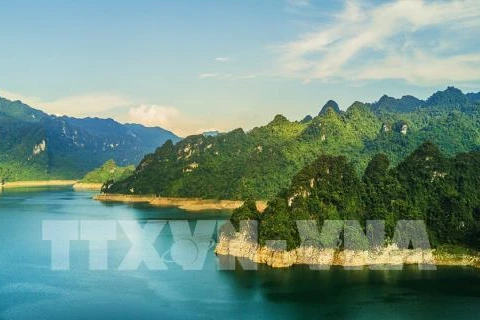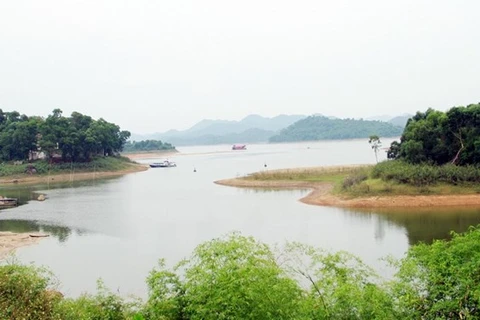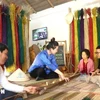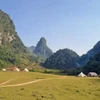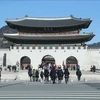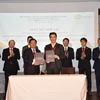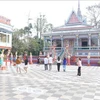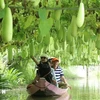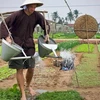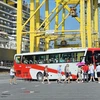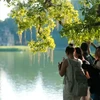Hanoi (VNA) - Prime Minister Nguyen Xuan Phuc has approved a master plan on the development of Thac Ba Lake national tourism site in the northern mountainous province of Yen Bai until 2025.
The site, located in Yen Binh district and Thac Ba town, will cover a total area of around 28,800 hectares. About 1,200ha (excluding the area of the water) will be used to develop the tourism zone.
The plan aims to turn the Thac Ba Lake site into a national tourism hub by 2025.
Over the next five years, the site will develop into an ecotourism, resort and recreation centre of Yen Bai province and the northern midland and mountainous area.
The site will take advantage of its lakeside areas, scenic beauty and the cultural identity of the Chay river to build a brand for tourism products aligned with approved regional development strategies.
The plan will ensure the area’s tourism sector is in harmony with other economic sectors and the lake’s other functions to maintain the region’s ecosystem, mitigate climate change and prevent natural disasters.
The site will develop connections with popular resorts and other tourism hotspots in Yen Bai and Hanoi.
One focus of the plan is on mobilising local resources and using rural labourers to help eradicate poverty and promote an economic transformation in the area.
The plan targets welcoming 380,000 visitors by 2025 and 1 million by 2030. International arrivals should account for 40,000 and 140,000 of the tourists, respectively. Accommodations will consist of 600 rooms by the first deadline and 1,000 by the second.
Total tourism revenues are expected to hit 300 billion VND (nearly 13 million USD) by 2025 and 900 billion VND by 2030. The site will create 1,000 jobs for local people by 2025 and 2,000 by 2030.
The site will focus on attracting tourists from Hanoi, other provinces in the Red River Delta, the northeastern coastal and the northern midland and mountainous region, while also attracting luxury tourists from HCM City, Da Nang and Can Tho.
Internationally, priority will be given to the traditional markets, including France, the US and Canada, in addition to expanding reach in Northeast Asian markets such as China, Japan and the Republic of Korea, and Southeast Asian nations including Thailand and Laos.-VNA
The site, located in Yen Binh district and Thac Ba town, will cover a total area of around 28,800 hectares. About 1,200ha (excluding the area of the water) will be used to develop the tourism zone.
The plan aims to turn the Thac Ba Lake site into a national tourism hub by 2025.
Over the next five years, the site will develop into an ecotourism, resort and recreation centre of Yen Bai province and the northern midland and mountainous area.
The site will take advantage of its lakeside areas, scenic beauty and the cultural identity of the Chay river to build a brand for tourism products aligned with approved regional development strategies.
The plan will ensure the area’s tourism sector is in harmony with other economic sectors and the lake’s other functions to maintain the region’s ecosystem, mitigate climate change and prevent natural disasters.
The site will develop connections with popular resorts and other tourism hotspots in Yen Bai and Hanoi.
One focus of the plan is on mobilising local resources and using rural labourers to help eradicate poverty and promote an economic transformation in the area.
The plan targets welcoming 380,000 visitors by 2025 and 1 million by 2030. International arrivals should account for 40,000 and 140,000 of the tourists, respectively. Accommodations will consist of 600 rooms by the first deadline and 1,000 by the second.
Total tourism revenues are expected to hit 300 billion VND (nearly 13 million USD) by 2025 and 900 billion VND by 2030. The site will create 1,000 jobs for local people by 2025 and 2,000 by 2030.
The site will focus on attracting tourists from Hanoi, other provinces in the Red River Delta, the northeastern coastal and the northern midland and mountainous region, while also attracting luxury tourists from HCM City, Da Nang and Can Tho.
Internationally, priority will be given to the traditional markets, including France, the US and Canada, in addition to expanding reach in Northeast Asian markets such as China, Japan and the Republic of Korea, and Southeast Asian nations including Thailand and Laos.-VNA
VNA


